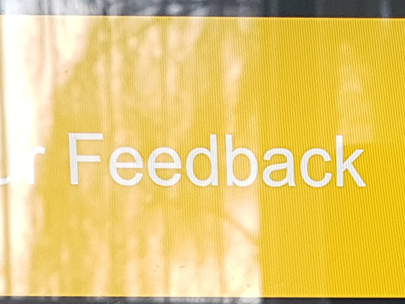How easy do you find it to navigate your way around your university’s virtual estate – its websites, virtual learning environment and other digital aspects? If the answer is “not very”, we suspect you may not be alone. And for those of us who might access it differently – without a mouse, for example, or through a screen reader or keyboard emulator – the challenge is multiplied. Digital accessibility is the wide-ranging work to make these challenges a thing of the past for everyone. It is a legal requirement and a moral imperative.
Make Things Accessible is the outcome of a collaboration, initially between the University of Westminster and UCL, but now incorporating many other universities. It is a community of practice, a website and an archive of resources. It aims to make things accessible for all.
How did Make Things Accessible get started?
Digital accessibility legislation came into force in the UK in 2018, requiring public bodies to move towards full digital accessibility. It was an imperative that connected with existing work – inclusion is a strategic priority for us. Our journey to become digitally accessible accelerated in June 2020 with a project that worked its way through web pages and blackboard sites, developed guidance and trained colleagues.
While digital accessibility focuses primarily on addressing the needs of people with a disability, good accessibility incorporates inclusive design and intermingles with wider inclusion activity. This ensures that no matter where someone sits in terms of ability, disability, additional access needs or the neurodiverse spectrum, we are creating an inclusive environment for everyone to thrive.
- It’s time to embrace digital equity
- Why is digital transformation such a challenge for HE?
- Taking digital accessibility from mandate for change to business as usual
Achieving digital accessibility was, and continues to be, a lot of work. The challenges universities face to delivering accessible services are many: raising awareness and training colleagues; improving accessibility of resources; building interconnections between digital accessibility and the accessibility of physical campuses.
Large and ever-changing IT landscapes and lists of platforms and suppliers create heavy workloads for teams responsible for digital accessibility compliance and good practice. We risk duplication of effort as universities all try to accomplish the same goals. And, in a challenging environment for higher education, going solo can feel a big hill to climb.
Come together
Collaboration can help. Doing things together enables shared expertise, brings together disparate interests and different projects and enables universities to achieve more. We worked initially with UCL. That partnership expanded and the initiative is now backed by universities nationwide to share the load and foster consistent practice across the sector. Make Things Accessible is the result.
Ben Watson, head of digital accessibility at UCL, said: “Make Things Accessible is a lovely opportunity to crowdsource the sector’s collective knowledge and experience in a single repository for the benefit of everyone. This can support the standardisation of approaches, avoiding duplication of effort, and therefore allow us to focus on providing the most effective support for all our staff and students.”
Creating the website was the easy part. The challenge was finding like-minded and committed people with time and resources to contribute. We leveraged our network of collaborators including internal colleagues, colleagues from other universities and volunteers. We were lucky to find others that took the leap with us to commit to writing, testing and reviewing shared resources.
To build your own collaborations, connect with the accessibility community: UCISA has digital accessibility activities, and the Jisc digital accessibility community is thriving. Conferences and online sessions connect. Try the Nottingham Digital Accessibility Conference or the Southampton-run International Accessibility Group. And do sign up for the Association of Learning Technologists Digital Accessibility Special Interest Group, where Make Things Accessible is a core part of the strategy.
The Make Things Accessible website has 85 guides in an ever-growing list. The guidance aims to enable colleagues to complete accessibility tasks more easily, from the basics, such as using Office 365 as an accessibility assistant, to the specialist, like accessibility testing using Linux.
Our collaborators care about content accessibility and have guides on good video and document practices, plain English, accessible social media content, and a variety of guides on writing alternative text descriptions. One reader favourite, on writing alt text to describe people, covers race, gender and sexual identity, visible disabilities and other physical descriptions. It solves a complex and regular question with two rules, context and respect.
The collaboration has also created comprehensive resources for improving accessibility compliance requirements in procurement exercises, which are now supported by the Royal National Institute of Blind People. The resource includes guidance to help score supplier responses, and comprehensive contract wording to hold suppliers to account.
Make Things Accessible receives more than 40,000 page views per month and is growing. It demonstrates the impact that cross-institution communities of practice can have on standards. It impacts the standards our suppliers are held to and enables more effective lobbying to government.
We hope that these resources help you to make progress in your own digital accessibility journey, and inspire you to contribute to the Make Things Accessible project with resources that will make the task easier for everyone working to make the higher education experience accessible.
Sal Jarvis is deputy vice-chancellor and George Rhodes is digital accessibility lead, both at the University of Westminster.
If you would like advice and insight from academics and university staff delivered direct to your inbox each week, sign up for the Campus newsletter.




comment